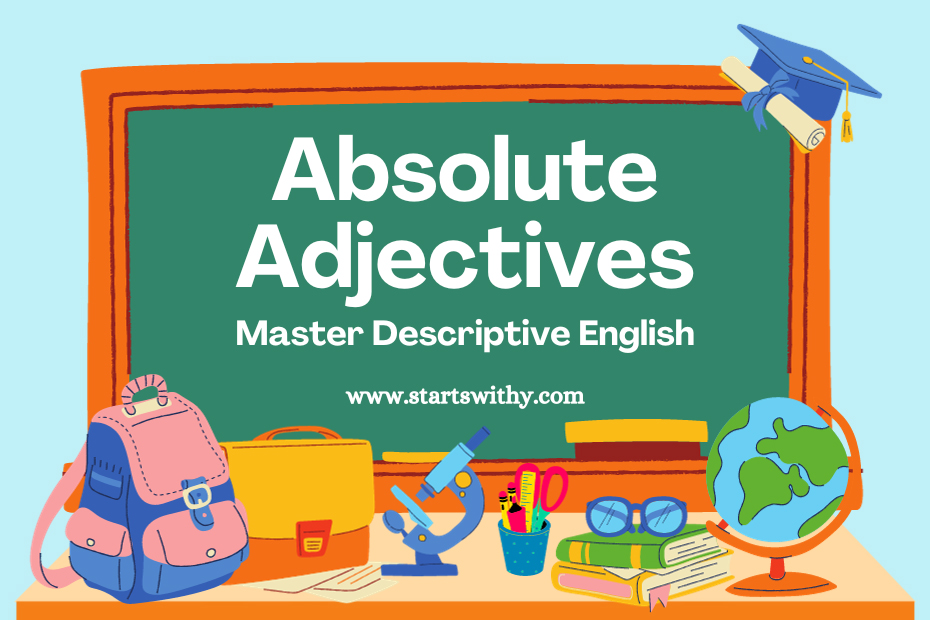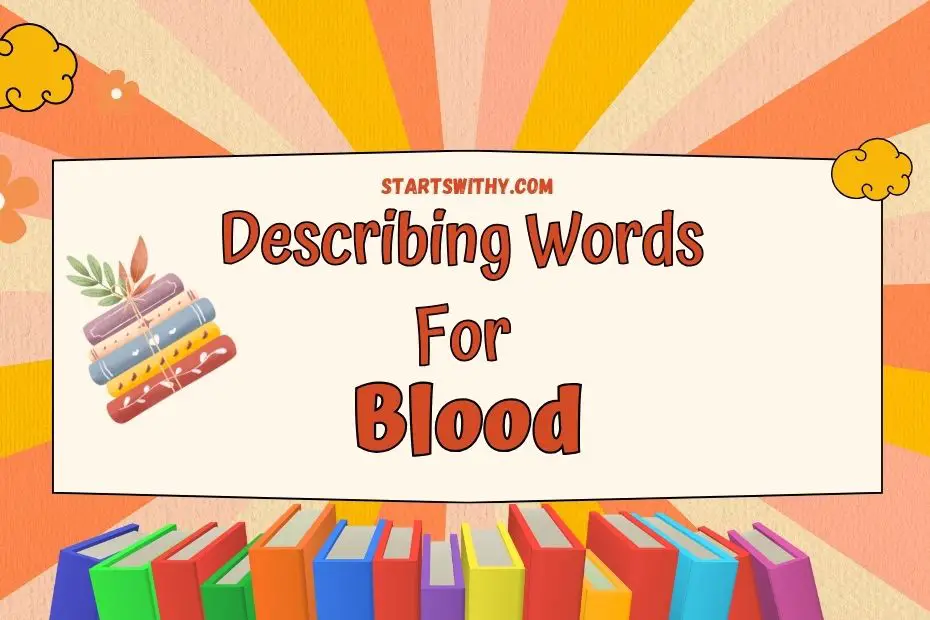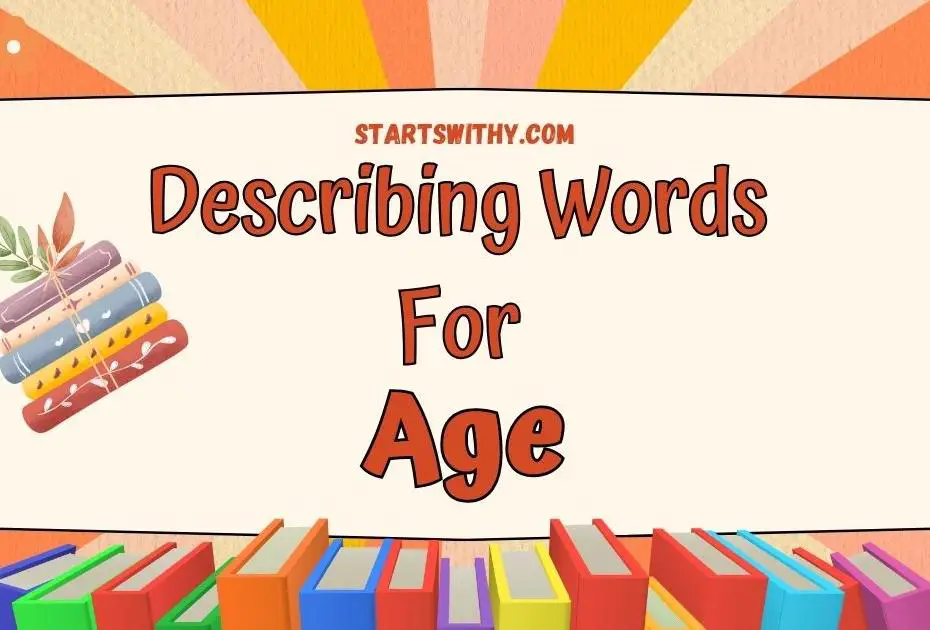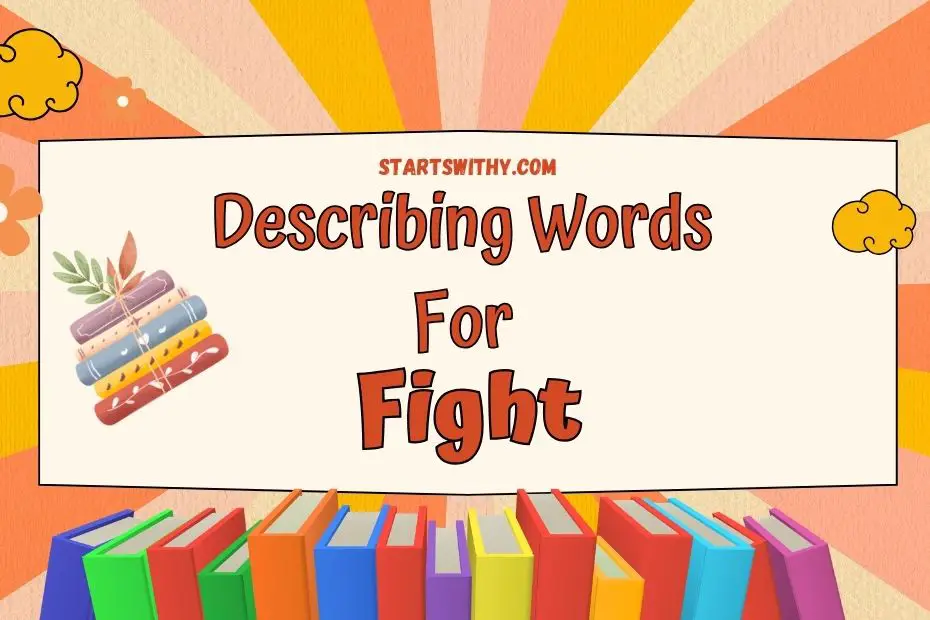Absolute adjectives are the unsung heroes of the English language, providing clarity and precision in our descriptions. They’re unique in that they stand alone, without needing a comparison to pack a punch.
I’m diving into the world of absolute adjectives to show you how they work and why they’re essential for effective communication. Whether you’re writing a novel or an email, mastering these linguistic powerhouses can elevate your language game.
What are Absolute Adjectives?
When teaching young minds, it’s vital to introduce concepts that shape their understanding of the world in clear terms. As they forge their path to literacy, understanding absolute adjectives becomes a cornerstone in their descriptive vocabulary.
Absolute adjectives are unique in their function; they describe qualities that are either completely present or absent, and they don’t cater to degrees of comparison. For instance, the word “perfect” implies something cannot be improved upon. It’s either perfect or it’s not. Similarly, “unique” means one of a kind. There’s no such thing as “very unique” because the very essence of being unique is that it’s incomparable.
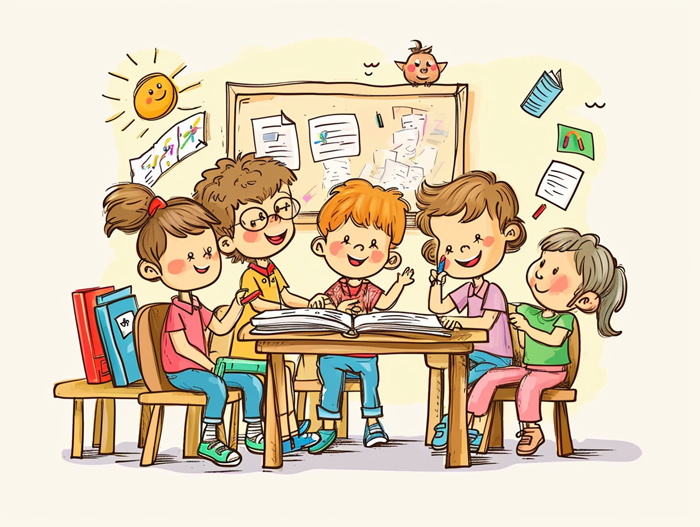
Here’s a simple way to recognize an absolute adjective. Consider whether the word stands on its own as a definitive description. If it doesn’t need qualifiers like “more” or “less” to make sense, you’re likely dealing with an absolute adjective. Kids can swiftly grasp this concept when they relate to unmistakable situations. Think of learning phrases like “full moon” or “empty bottle” where the condition is total, leaving no room for confusion.
In my experience, teaching these terms sharpens children’s perceptual skills. They start to notice details and qualities in their environment and express them aptly. Imagine a child describing their lunchbox as “full” when it’s packed with goodies. They’re not just speaking; they’re painting a picture with words.
To encourage this kind of clarity, here’s an exercise I often use:
- Show pictures illustrating absolute states (e.g., a brimming cup versus an empty one).
- Ask the children to label each with the right absolute adjective.
- Discuss why we wouldn’t say “more full” or “completely empty”.
Through such activities, I’ve observed an enhancement in their descriptive abilities and a boost in their confidence to express observations accurately. It’s remarkable how the mastery of a few select words can fundamentally enrich communication. Absolute adjectives empower kids to describe their world perfectly, fostering a strong foundation for their growing lexicon.
Characteristics of Absolute Adjectives
When discussing the nuances of absolute adjectives, it’s important to note that these descriptors have certain features that set them apart from regular adjectives. First and foremost, absolute adjectives don’t fall on a gradient—they’re binary. This means they indicate a state that is either wholly true or not at all. Think of them as an on-off switch for qualities; either the light is on, or it’s off.
For instance, I often tell kindergarten educators that words such as “dead” or “unique” are perfect examples. Something can’t be “very dead” or “more unique”; it simply is or isn’t. This characteristic can greatly simplify language concepts for little learners as it removes the complexity of comparing degrees.
Additionally, absolute adjectives are typically invariable; they don’t have comparative or superlative forms. When you’re teaching children, you’ll find that it’s essential to highlight this aspect. Not only does it reinforce their understanding of certain qualities as being definitive, but it also helps prevent confusion that often arises from trying to modify terms that don’t logically accept modification.
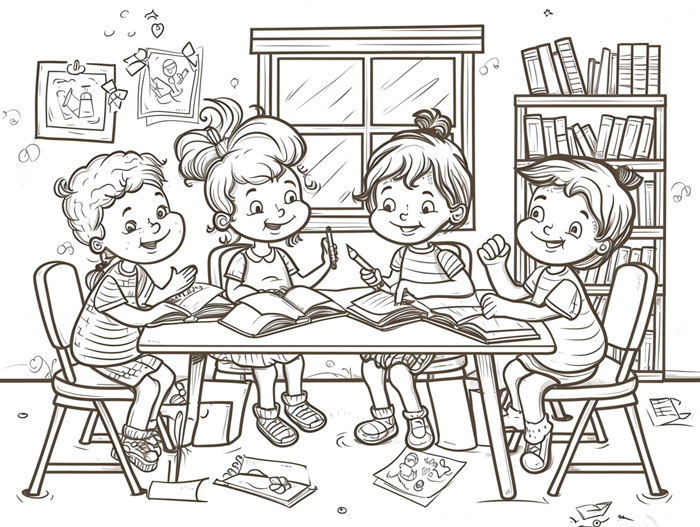
To help young minds grasp the concept, I suggest incorporating fun activities like word sorting. You might have a list of mixed adjectives and then work with the kids to separate the absolute adjectives from the rest. Not only does this engage the students, but it also fosters a stronger grasp of the language.
It’s intriguing to explore how these types of adjectives can influence the way we perceive and describe the world around us. By instilling a solid foundation in the use of precise language, we can give kids the tools to express themselves clearly and confidently. Whether it’s in creative writing or daily conversation, understanding the role of absolute adjectives can add a layer of sophistication to children’s communication skills.
And remember, language learning is an ongoing journey. There’s always more to discover, and as a teacher, I’m constantly looking for innovative ways to present these concepts to young learners. The aim is to nurture a lifelong love of words and expression in each and every child.
Examples of Absolute Adjectives
Delving into the realm of absolute adjectives, it’s essential for educators like myself to enrich preschool and kindergarten curriculums with clear examples that young learners can easily grasp. I often bring up the term “infinite” when I discuss concepts that cannot be measured or broken down into smaller increments. The appeal of this word lies in its definitiveness; something is either infinite or it’s not.
Let’s examine a few more instances of these definitive descriptors that don’t allow for comparison:
- Dead
- Unique
- Perfect
- Empty
- Full
- Absolute
When I introduce “dead” to my students, I clarify that it’s an irreversible state. This understanding anchors the concept that some adjectives depict an ultimate condition. Then there’s “unique,” a favorite among kids because it embodies the specialness and one-of-a-kind nature of a person or object. Again, there’s no in-between – something can’t be “very unique” or “more unique.”
Teaching these terms paves the way for youngsters to process much more complex language as they grow. I incorporate words such as “perfect,” which stands for an ideal state, something without flaws. Children can relate to this when I talk about a “perfect circle,” as they strive to draw one without any bumps or irregularities. The simplicity of “empty” and “full” offer a tactile learning experience as kids observe containers either entirely devoid of content or brimming, realizing there’s no continuum – a cup isn’t ’emptier’ or ‘fuller.’
Tools like semantic gradation walls in classrooms help students categorize words, distinguishing absolute from those that are gradable. This visual aid not only reinforces their understanding but also supports their language development. As I introduce and explain these absolute adjectives to my little learners, I keep an eye out for expressions of comprehension and curiosity, which tell me they’re beginning to appreciate the precision of our language. It’s a delight to see that spark of recognition when a young mind grasps the binary nature of these special words.
Using Absolute Adjectives in Writing
When I craft stories or examples for my young learners, I ensure that incorporating absolute adjectives becomes a subtle, yet powerful tool. Their capacity to express a definitive state gives children a solid framework to describe the world around them.
In my classroom, I often start with simple exercises. We might describe an object like a glass of water. The children quickly learn that a glass is either full or empty, and that halfway does not align with absolute terms. I highlight that you can’t be ‘very empty’ or ‘slightly full’ in the same way you can’t be a little dead or somewhat unique.
Through these exercises, I’ve observed that students better grasp the concept of imperatives in language. They also begin to identify when absolutes are misused in everyday conversations and media. For instance, the term “completely destroyed” becomes redundant, as “destroyed” alone denotes totality.
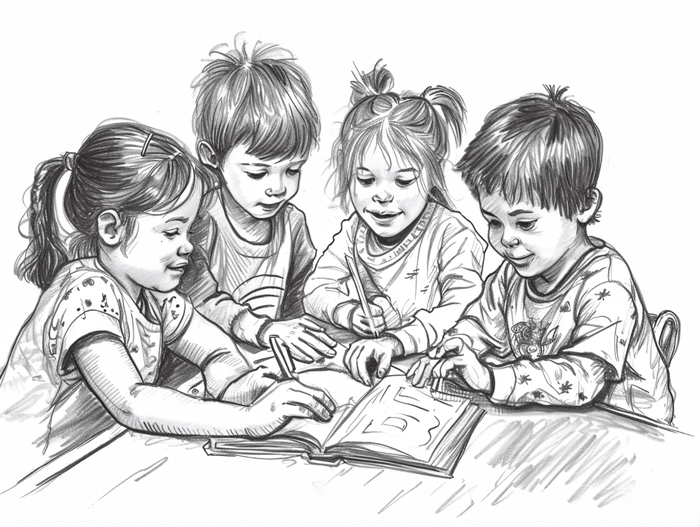
Literary activities in my lesson plans often include:
- Writing short descriptions using a list of absolute adjectives.
- Creating sentences that depict something in its ultimate state, like an empty box.
- Imagining scenarios where absolutes would be essential, such as in safety instructions.
Displaying classwork on a bulletin board serves as a constant reminder of our lessons. Seeing their work hung up with bolded absolute adjectives reinforces their learning and showcases the importance of precision.
Teaching absolute adjectives equips my students with more than vocabulary. It’s about nurturing a thought process, a way to comprehend and impart experiences that don’t entertain degrees. By focusing on these ungradable terms, I provide a pathway for clearer communication and thought structuring, setting a sturdy foundation for their language growth. My lesson plans evolve with the proficiency levels of my students, but the focus on absolute adjectives remains constant as they advance.
Common Mistakes to Avoid with Absolute Adjectives
When I’m teaching young learners about absolute adjectives, I find it essential to cover the common pitfalls that can confuse them. One of the most frequent mistakes is treating these adjectives as if they have degrees of comparison. Words like unique, complete, and perfect don’t have a middle ground—they are definitive by nature. It’s like saying something is more unique or less perfect, which doesn’t make sense. I always remind my students that these adjectives stand on their own, without needing to be magnified or minimized.
Another mistake that crops up is confusing absolutes with subjective descriptors that can be seen as opinion-based. For example, calling something beautiful may vary from person to person, but labeling it infinite is an absolute condition that doesn’t change with opinion. It’s vital to clarify this distinction, as kids might interchange the two, leading to unclear expressions.
In addition to these, a subtle but crucial error is neglecting context. Absolute adjectives thrive on context. If I show my class an image that’s labeled as an empty street, but there’s a single car in the far corner, we have a great opportunity to discuss why it’s not truly empty. This helps learners grasp the significance of accuracy in language.
I’ve also seen students mix up absolutes with non-absolute cousins. For instance, dead is absolute, but tired, which can be mistaken as an absolute, actually varies in intensity. Through exercises and repetition, I guide my students to recognize these differences and select the correct words.
To tackle these challenges, I incorporate various strategies into my lesson plans:
- Contextual learning: embedding absolute adjectives in stories or descriptions to reinforce their meaning.
- Visual aids: using images that depict absolutes, such as a picture of a shattered glass to represent broken.
- Peer review: students pair up and check each other’s work for misuse of absolutes.
Understanding absolute adjectives is like unlocking a new level of precision for young learners. It’s not just about expanding their vocabulary; it’s about enhancing the way they communicate. And, as they hone this skill, they begin to appreciate the nuances of the English language more fully. Teaching these absolutes, then, isn’t just a grammar lesson—it’s a step towards nurturing attentive and expressive communicators for the future.
Conclusion
Mastering absolute adjectives is key to becoming an articulate communicator. I’ve shown you the pitfalls to avoid and the strategies that can make learning them both effective and engaging. Remember, it’s not just about memorizing a list—it’s about understanding their unique role in language. Armed with these insights, you’re now better prepared to use absolute adjectives to their full potential, ensuring your communication is always clear, precise, and impactful. Let’s embrace these powerful tools and elevate our language skills to new heights.
